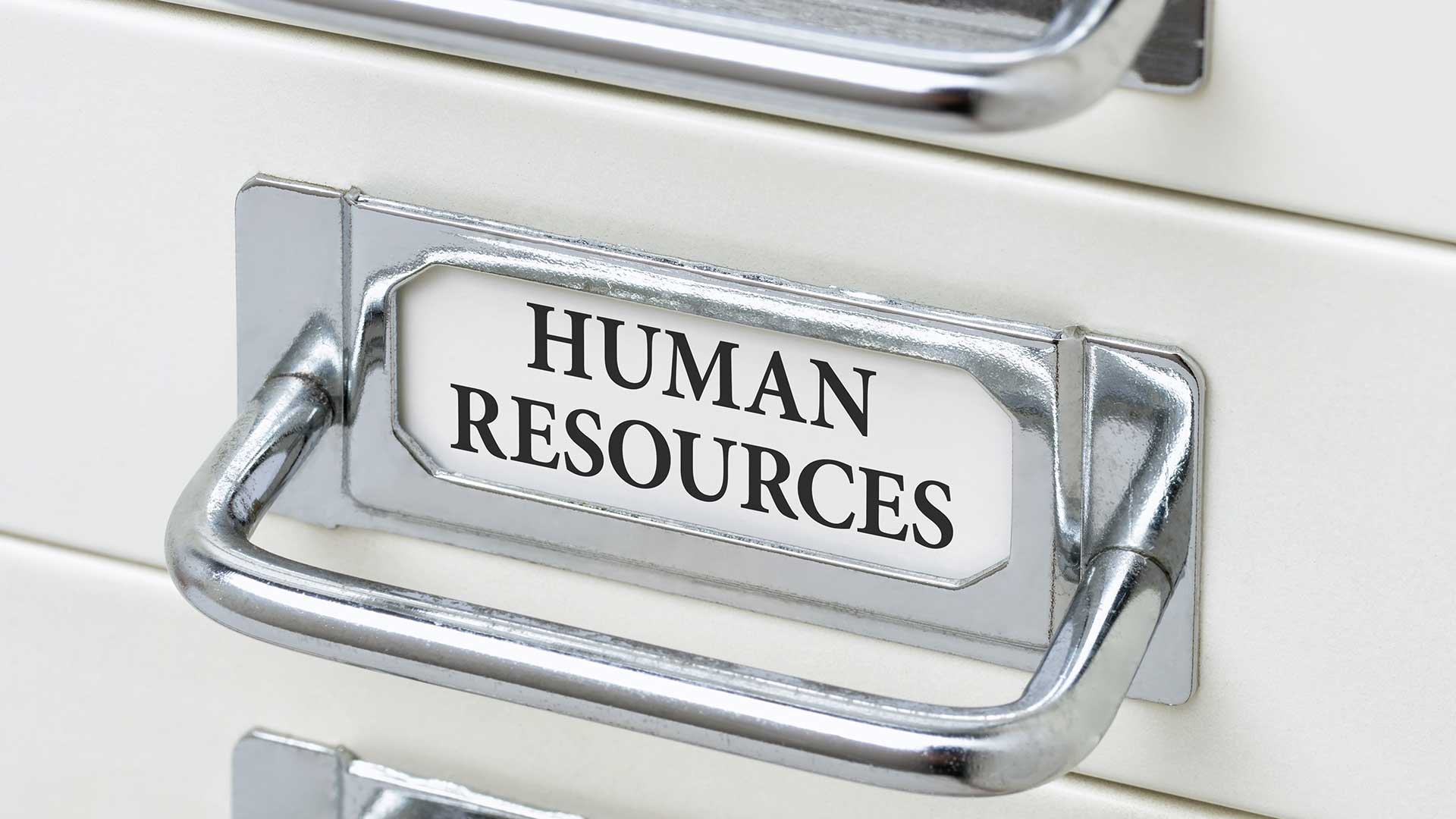The Role of Scanning in Modern Human Resource Management
Table of contents
In the complex world of architectural firms and construction companies, the management of human resources (HR) stands as a critical pillar of success. Efficient HR management not only ensures a streamlined workflow but also significantly affects project outcomes. Traditionally, HR departments have been bogged down by the cumbersome handling of physical documents. From contracts and blueprints to employee records, the sheer volume of paperwork can be overwhelming. This traditional approach presents a host of challenges, notably in accessibility, security, and compliance. Enter the solution: HR document scanning. This innovative approach promises to transform the HR landscape in the architecture and construction industries by digitizing physical documents, thereby enhancing efficiency and productivity.
Challenges of Traditional HR Document Handling
Managing HR documents in their physical form is fraught with challenges. The manual filing, storage, and retrieval of documents not only consume valuable time but also increase the risk of loss and damage. Furthermore, ensuring the security and confidentiality of sensitive employee information becomes increasingly difficult. Compliance with legal and regulatory requirements adds another layer of complexity, necessitating meticulous document management practices.
HR Document Scanning as a Solution
The advent of HR document scanning offers a formidable solution to the challenges posed by traditional document handling. By converting physical documents into digital formats, architectural firms and construction companies can achieve a level of efficiency and security previously unattainable. This transition not only streamlines HR functions but also has a ripple effect on overall project management, directly impacting timelines and operational efficiency.
The Necessity of HR Document Scanning in the Architecture and Construction Industries
In the complex world of architectural firms and construction companies, the management of human resources (HR) stands as a critical pillar of success. Efficient HR management not only ensures a streamlined workflow but also significantly affects project outcomes. Traditionally, HR departments have been bogged down by the cumbersome handling of physical documents. From contracts and blueprints to employee records, the sheer volume of paperwork can be overwhelming. This traditional approach presents a host of challenges, notably in accessibility, security, and compliance. Enter the solution: HR document scanning. This innovative approach promises to transform the HR landscape in the architecture and construction industries by digitizing physical documents, thereby enhancing efficiency and productivity.
Challenges of Traditional HR Document Handling
Managing HR documents in their physical form is fraught with challenges. The manual filing, storage, and retrieval of documents not only consume valuable time but also increase the risk of loss and damage. Furthermore, ensuring the security and confidentiality of sensitive employee information becomes increasingly difficult. Compliance with legal and regulatory requirements adds another layer of complexity, necessitating meticulous document management practices.
HR Document Scanning as a Solution
The advent of HR document scanning offers a formidable solution to the challenges posed by traditional document handling. By converting physical documents into digital formats, architectural firms and construction companies can achieve a level of efficiency and security previously unattainable. This transition not only streamlines HR functions but also has a ripple effect on overall project management, directly impacting timelines and operational efficiency.
Would you like to proceed to the next section on the key benefits of HR document scanning, or is there anything else you'd like to adjust or add in the introduction?
Key Benefits of HR Document Scanning
The integration of HR document scanning into the management processes of architectural firms and construction companies brings forth a myriad of benefits. These advantages not only streamline HR functions but also contribute to the broader organizational goals of efficiency, security, and sustainability.
Increased Accessibility and Organization
Ease of Accessing Employee Records and Project Documents
Digital documents revolutionize how information is accessed and shared within an organization. With HR document scanning, employee records and project documents are readily available at the click of a button. This instant accessibility enhances decision-making processes and supports a more agile HR management approach. Moreover, digital document management systems offer sophisticated search and retrieval capabilities, ensuring that specific documents can be found swiftly and efficiently.
Benefits of Digital Document Management Systems
Digital document management systems go beyond mere storage; they offer a structured and organized way of managing documents. Through categorization, indexing, and tagging, these systems ensure that documents are organized logically, making retrieval straightforward. Additionally, they support version control, ensuring that the most current document versions are always at hand, thus minimizing confusion and errors.
Enhanced Security and Compliance
Securing Digital Documents
The transition to digital documents introduces advanced security measures that are difficult to implement with physical documents. Encryption, access controls, and audit trails ensure that sensitive information is protected against unauthorized access and breaches. These security measures not only safeguard employee data but also protect proprietary and project-specific documents.
Importance of Compliance in Document Handling
Compliance with industry regulations and legal requirements is a cornerstone of HR management. Digital documents facilitate compliance through easier monitoring and reporting. For instance, digital storage solutions can help ensure that documents are retained for the required periods and that disposal procedures comply with legal standards, reducing the risk of non-compliance penalties.
Cost Reduction and Space Savings
Analyzing Cost Savings
The switch to digital documents leads to significant cost savings. The reduction in paper use, along with decreased needs for physical storage, cuts down on both direct expenses and administrative overheads. Digital documents eliminate the need for printing, photocopying, and physical storage solutions, translating into lower operational costs.
Examples of Reallocation of Space for Productive Use
The space previously dedicated to document storage can be repurposed for more productive uses. In an architectural firm or construction company, this could mean additional workspace for teams, meeting areas, or even creative spaces for brainstorming and project planning. This not only optimizes the use of office space but also contributes to a more dynamic and collaborative work environment.
Improved Disaster Recovery
Enhancing a Firm's Disaster Recovery Plan
Digital HR documents play a pivotal role in enhancing a firm's disaster recovery capabilities. In the event of physical disasters or data breaches, having digital backups ensures that critical HR documents are not lost. This resilience is crucial for maintaining operational continuity and safeguarding employee information.
The Role of Cloud Storage in Document Preservation
Cloud storage solutions offer a secure and reliable means of preserving digital documents. By storing documents in the cloud, firms benefit from robust data protection measures, redundancy, and easy recovery. This not only enhances disaster recovery efforts but also provides peace of mind knowing that critical HR documents are securely backed up.
Implementing Document Scanning in HR Management
Adopting HR document scanning is a transformative step for architectural firms and construction companies, setting the foundation for a more efficient, secure, and compliant HR management system. This transition, however, requires careful planning and execution to ensure success. Here are the steps and considerations involved in implementing document scanning within HR management.
Steps to Transition from Paper to Digital Documents
-
Assessment of Current Document Processes: Begin with a thorough assessment of existing document management practices. Identify the types of documents handled, volume, and the current storage and retrieval processes. This assessment will highlight areas for improvement and guide the digital transition.
-
Development of a Digitization Strategy: Based on the assessment, develop a comprehensive strategy that outlines the scope of digitization, priorities, and timelines. This strategy should consider the need for scanning existing physical documents and the approach for handling new documents.
-
Selection of the Right Tools and Technologies: Choose the appropriate document scanning solutions and digital document management systems that align with your firm's needs. Factors to consider include scalability, security features, ease of integration, and support for various document types.
-
Training and Change Management: Equipping your team with the knowledge and skills to adapt to digital document management is crucial. Training sessions and ongoing support will ease the transition and ensure that staff members are comfortable with the new systems.
-
Implementation and Continuous Improvement: Roll out the document scanning and digital management systems, starting with pilot projects or specific document types, if applicable. Monitor the implementation closely, soliciting feedback from users to identify challenges and areas for improvement. Continuous refinement will ensure the system meets evolving organizational needs.
Choosing the Right Document Scanning Service Provider
Highlighting DocCapture’s Services and Expertise
Choosing a service provider like DocCapture, renowned for its expertise in HR document scanning, can significantly ease the transition. DocCapture offers tailored solutions designed to meet the unique needs of architectural firms and construction companies. With state-of-the-art scanning technology, secure document handling practices, and a deep understanding of HR document management challenges, DocCapture ensures a smooth and efficient digitization process.
Integration with Existing HR Management Systems
A critical aspect of implementing document scanning is ensuring seamless integration with existing HR management systems. This integration allows for the automated update of digital records, reducing manual data entry and potential errors. It also ensures that HR processes, such as onboarding, performance management, and compliance reporting, benefit from real-time access to accurate and up-to-date information.
With these steps, architectural firms and construction companies can navigate the transition from paper-based to digital HR document management, reaping the benefits of increased efficiency, security, and compliance.
Case Studies/Examples
The transformational impact of HR document scanning in the architectural and construction industries can be best illustrated through real-world examples. These case studies not only showcase the tangible benefits of digital document management but also provide insight into the implementation process and outcomes.
Example 1: Modern Architectural Firm Embraces Digital Transformation
A leading architectural firm, facing challenges with document overflow and inefficiency, partnered with DocCapture to initiate a comprehensive document scanning project. The firm had an extensive archive of blueprints, contracts, and employee records, all stored in physical form.
Before Implementation: The firm's HR department spent considerable time managing paperwork, leading to delays in document retrieval and increased risk of data mismanagement. The physical storage space required for these documents was substantial, contributing to increased operational costs.
After Implementation: With DocCapture's expertise, the firm successfully digitized its entire document archive. The digital document management system implemented allowed for easy search and retrieval, significantly reducing the time HR staff spent on administrative tasks. The firm witnessed a notable improvement in efficiency and project turnaround times. Moreover, freed-up physical space was repurposed for collaborative work areas, enhancing the office environment.
Example 2: Construction Company Strengthens Disaster Recovery Plan
A mid-sized construction company, vulnerable to data loss from physical disasters, decided to overhaul its HR document management approach by adopting digital scanning solutions.
Before Implementation: The company's reliance on paper documents posed a significant risk in the event of natural disasters or accidents. Recovery of lost documents was nearly impossible, threatening business continuity and compliance.
After Implementation: Transitioning to a cloud-based document management system, the company enhanced its disaster recovery capabilities. Digital backups of all HR documents ensured that critical information was secure and could be quickly restored. This shift not only protected the company from potential data loss but also streamlined HR operations and improved regulatory compliance.
Key Outcomes Across Case Studies
- Efficiency and Productivity: Both firms experienced a marked increase in operational efficiency. Digital documents reduced the time and effort required for document handling, allowing staff to focus on core activities.
- Cost and Space Savings: The transition to digital documents resulted in significant cost savings, primarily through reduced paper use and the need for physical storage. Additionally, repurposing former storage areas improved the workplace environment.
- Enhanced Security and Compliance: Digital document management systems offered advanced security features, ensuring the confidentiality and integrity of sensitive information. Compliance with industry regulations and standards was also easier to achieve and maintain.
- Improved Disaster Recovery: Digital backups and cloud storage solutions provided a robust safety net against data loss, ensuring business continuity even in adverse situations.
Conclusion
The shift towards HR document scanning in the architecture and construction industries marks a pivotal move towards operational excellence and strategic advantage. By overcoming the limitations of traditional document management, firms unlock enhanced accessibility, organization, security, and compliance, while also realizing significant cost savings and contributing to environmental sustainability. The adoption of digital document management systems, particularly with the guidance and expertise of providers like DocCapture, ensures a seamless and efficient transition tailored to the dynamic needs of these industries.
Through real-world examples, we've observed not only efficiency gains but substantial improvements in project management, team collaboration, and overall organizational resilience. The compelling case for transitioning to a digital HR document management system offers a clear pathway to streamlined operations, heightened security, and strategic growth for architectural firms and construction companies alike.
Ready to take the next step and explore the transformative benefits of HR document scanning for your business? Achieve operational improvements, cost savings, and a competitive edge by embracing document scanning solutions. Contact DocCapture today for a personalized consultation or demonstration of our industry-tailored document scanning solutions. Transform your HR document management processes and propel your firm towards a future of increased efficiency and security.
Don't wait to start your journey towards digital transformation. Fill out our "get a quote" form on our website to receive a personalized assessment and quote tailored to your firm's specific needs. Let DocCapture be your partner in redefining HR document management for the better.
Share this
You May Also Like
These Related Stories

Revamping HR with Digital Transition: The Power of Document Scanning

Mitigating Risks in HR Through Effective Document Management

